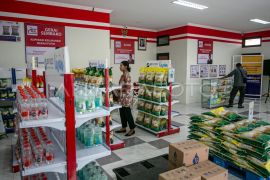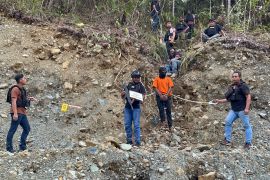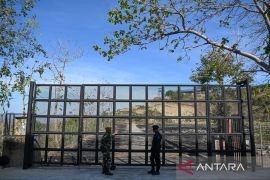The minister said at Randusanga beach in Brebes on Saturday the mangrove forest destruction in Indonesia had reached a very alarming level.
He said of the 9,36 million hectares of mangrove forests along the country`s 81,000-kilometer-long coastline 71 percent had been damaged with 2.15 million of them seriously and 4,51 million others moderately.
"The most serious destruction is found in Bagan Siapiapi in Riau, Sumatra and Muncar, Banyuwangi, in East Java," he said.
He said the destruction in a number of coastal areas especially in Java could even be categorized as very serious due to uncontrolled cutting, fish pond expansion and other natural resource exploitation activities.
He said coral reefs along the northern coast of Java had also been damaged due to industrial waste and garbage dumping directly to the coast or through rivers that had also caused serious coastal pollution and damage.
The minister said the rate of abrasion on the coast of Brebes rose from year to year. In 2009 it rose from 513.59 to 619,50 hectares so that serious efforts had to be made by all parties especially the local government to overcome it.
He said serious and very serious mangrove forest destruction also occurred in nine other regions namely in Kalimantan, Sumatra, Sulawesi and other coastal regions.
"To restore the coastal regions local officials are required to play an active role through mangrove tree replanting and installation of waves breakers in certain locations involving community members," he said.
Brebes district head Agung Widyantoro meanwhile said the district`s coast line stretches for around 53 kilometers with mangrove forest covering around 852 hectares from Brebes sub-district to Losari.
However due to pollution and coastal environment damage almost 50 percent of the forest has been damaged.
"As the impact there has been sea water intrusion and formation of ponds in low laying areas and erosion causing disruptions in coastal livelihood including fisheries, farming, tourism and people`s health conditions, he said.
He said efforts had been taken so far such as mangrove tree planting that involves the community and local officials as well as construction of waves breakers.
He said "the local government is committed to take care of the 80,000 magrove tree program of the environment ministry to assure that the Brebes coast will really become a green belt."
A member of House Commission VII Dewi Aryani who was in the delegation said the green belt program in Brebes would be a pilot project.
Brebes has been chosen because "Brebes has the widest fish ponds in Central Java and the biggest population in the province who are mostly farmers." (*)
(H-YH/HAJM)
Editor: Ruslan Burhani
Copyright © ANTARA 2011











